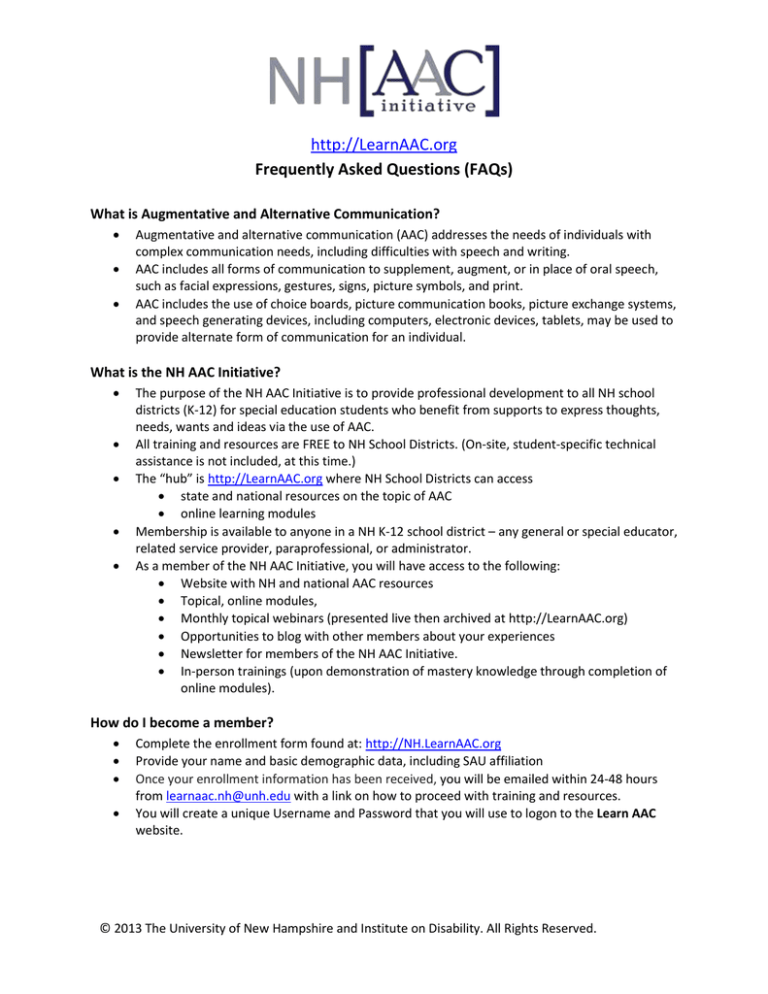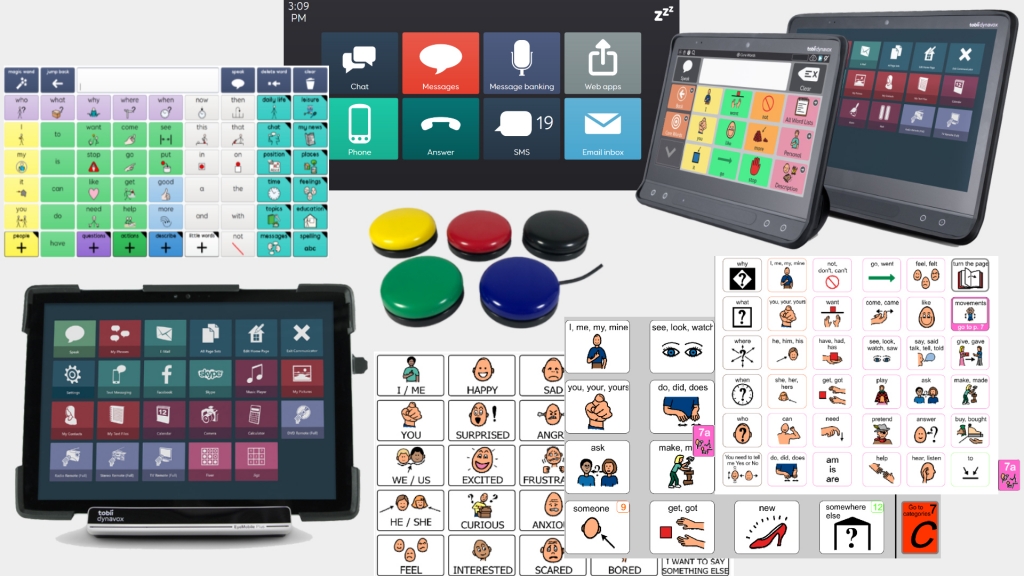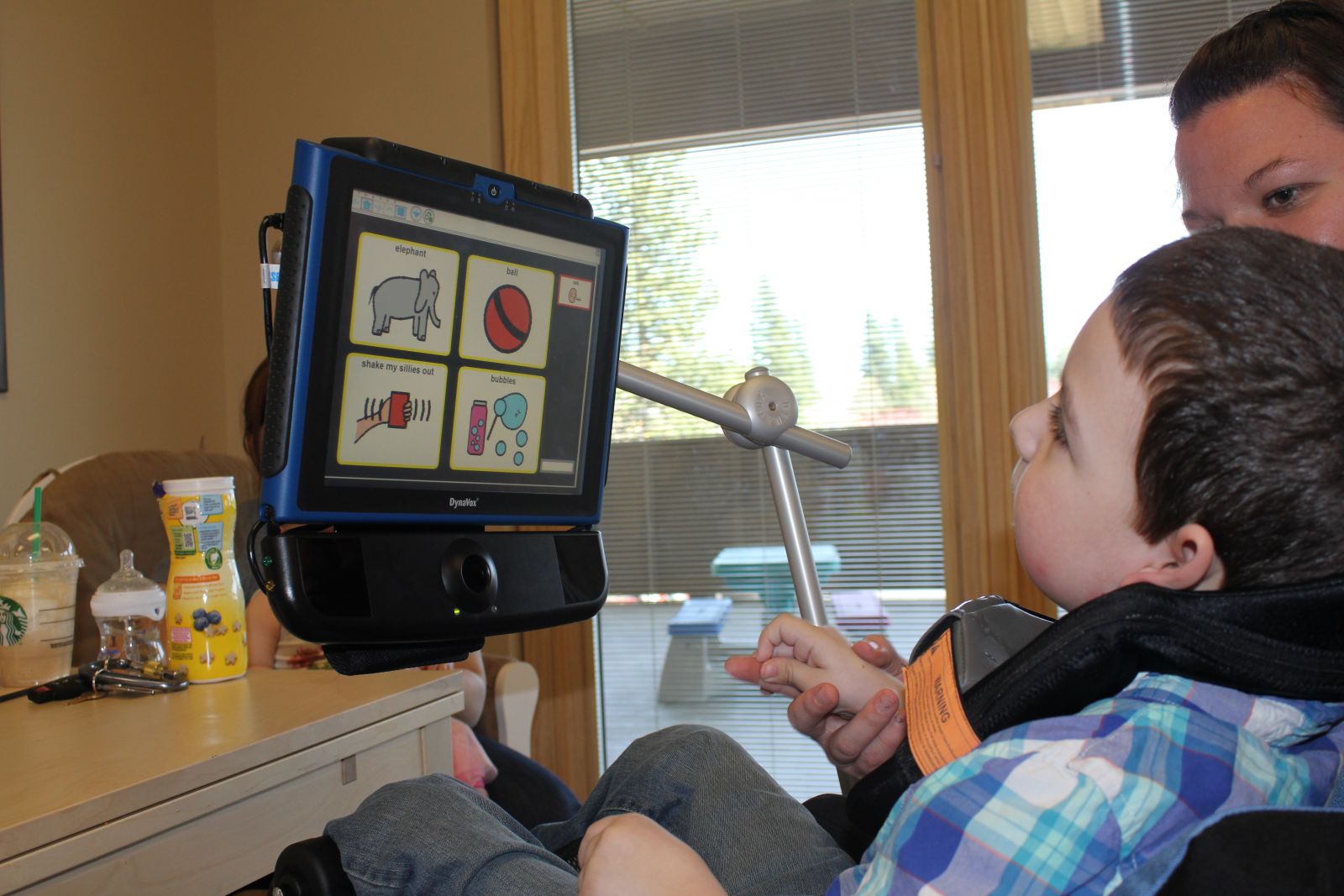
(PDF) Effectiveness of Different Types of Augmentative and Alternative
Augmentative and alternative communication (AAC) is a set of procedures and processes by which an individual's communication skills can be maximized for functional and effective communication. AAC approaches supplement or replace natural speech with aided options that incorporate the use of some type of device ranging from simple picture.

Augmentative and Alternative Communication Profile AurorahasErickson
It has two functions: (1) Measures subjective, functional skills for developing communicative competence using AAC systems, retests skill level, and monitors progress, and (2) Guides intervention to help clients who use any type of speech-generating AAC system.

Augmentative and Alternative Communication with EdTech ViewSonic Library
Effects of interventions that include aided augmentative and alternative communication input on the communication of individuals with complex communication needs: A meta-analysis. Journal of Speech, Language, and Hearing Research , 61(7), 1743-1765.

Frequently Asked Questions (FAQs) What is Augmentative and Alternative
Augmentative and alternative communication (AAC) is an area of clinical practice that supplements or compensates for impairments in speech-language production and/or comprehension, including spoken and written modes of communication.

Educational Technology Augmentative and Alternative Communication
Purpose of Review Neurodevelopmental disorders lead, many times, to serious communication problems that also affect their quality of life. Therefore, it is essential to undertake rehabilitation projects aimed at promoting communication through the use of alternative and augmentative communication strategies and tools. The main objective of this systematic review based on existing scientific.

What Is Augmentative and Alternative Communication? 2022 HelpToStudy
Augmentative and alternative communication (AAC) interventions are used for children with autism, often as stand-alone communication interventions for those who are minimally verbal. Our aim was to synthesize the evidence for AAC interventions for children (up to 21 years), and then consider the role of AAC within established, comprehensive.

Augmentative and Alternative Communication (AAC) Rehab Solutions Adelaide
The profile of the individual including: vision, hearing, sensory-motor, motivation, cognitive, linguistic, literacy skills, and current modes of communication. Augmentative and Alternative Communication: Supporting Children & Adults with Complex Communication Needs 4th Edition. Baltimore: Paul H. Brookes Publishing.
Augmentative and Alternative Communication Profile AurorahasErickson
Amyotrophic lateral sclerosis (ALS) is a rapidly progressive neuromuscular disease of unknown cause and no cure. Initial characteristics vary, with some individuals experiencing bulbar (brainstem) symptoms involving speech and swallowing, others who experience initial spinal symptoms involving the limbs, and still others *Corresponding author.

Augmentative alternative communication profile a continuum of learning
What is augmentative and alternative communication? AAC is one way that a person may communicate without talking. Augmentative means to add to someone's speech. Alternative means to be used instead of speech. You may have seen someone in your life or on TV using a tablet or different device to type or even speak their words for them.

What is AAC and will it help my child? Bayside Pediatric Therapy
About AAC AAC means all of the ways that someone communicates besides talking. People of all ages can use AAC if they have trouble with speech or language skills. Augmentative means to add to someone's speech. Alternative means to be used instead of speech. Some people use AAC throughout their life.

2 Alternative augmentative communication (AAC). Source University of
The authors conducted a systematic review of the literature, including studies that used a single-case design (SCD) and taught augmentative and alternative communication (AAC) use to adults with co.

Augmentative & Alternative Communication Supporting Children & Adults
Abstract High-tech augmentative and alternative communication (AAC) methods are on a constant rise; however, the interaction between the user and the assistive technology is still challenged for an optimal user experience centered around the desired activity.

Augmentative and Alternative Communication with EdTech ViewSonic Library
Profile results guide intervention and instruction by providing a systematic way to meaure and document progress. Test Set includes: Examiner's Manual, 15 Profile Forms MORE ITEMS FROM Augmentative & Alternative Communication

Introduction To Augmentative And Alternative Communication Book Pdf
The Augmentative Communication Program at Stanford Medicine Children's Health provides comprehensive AAC evaluations and short-term treatment for children and young adults who have conditions that make it difficult to use spoken language. If your child has difficulty with communication, he or she can use augmentative and alternative.

Augmentative/ Alternative Communication (AAC) > Center for Pediatric
As the official journal of the International Society for Augmentative and Alternative Communication (ISAAC), Augmentative and Alternative Communication (AAC) publishes scientific articles related to the field of augmentative and alternative communication (AAC) that report research concerning assessment, treatment, rehabilitation, and education of people who use or have the potential to use AAC.

28 best images about AAC/AT Data Collection Forms on Pinterest Utah
Augmentative & Alternative Communication Profile (AACP) AACP Profile Forms (15) $40.00 This profile includes everything you need to assess communicative competence and design intervention for the ever-changing needs of people who use AAC systems. The Profile has two functions: